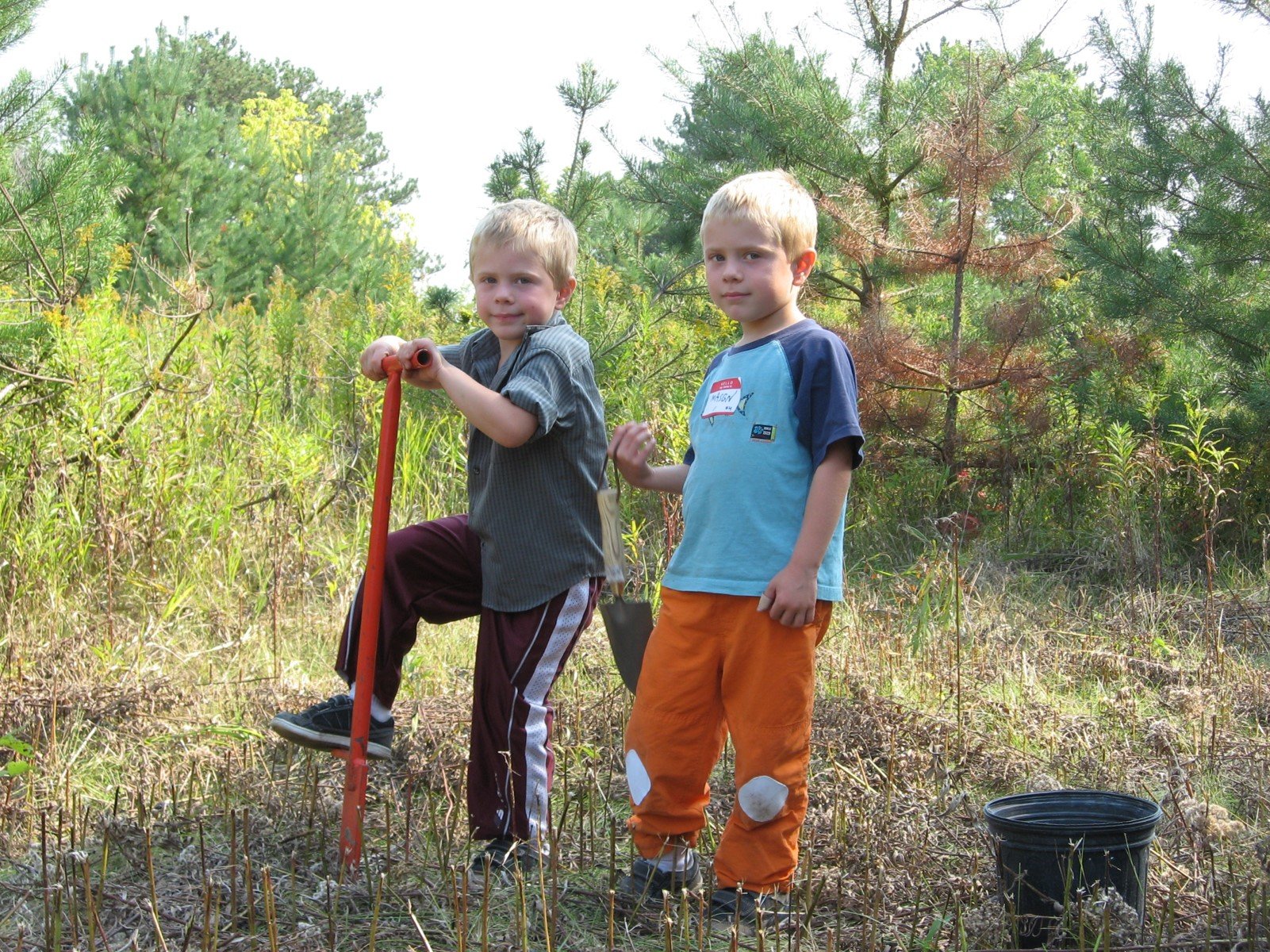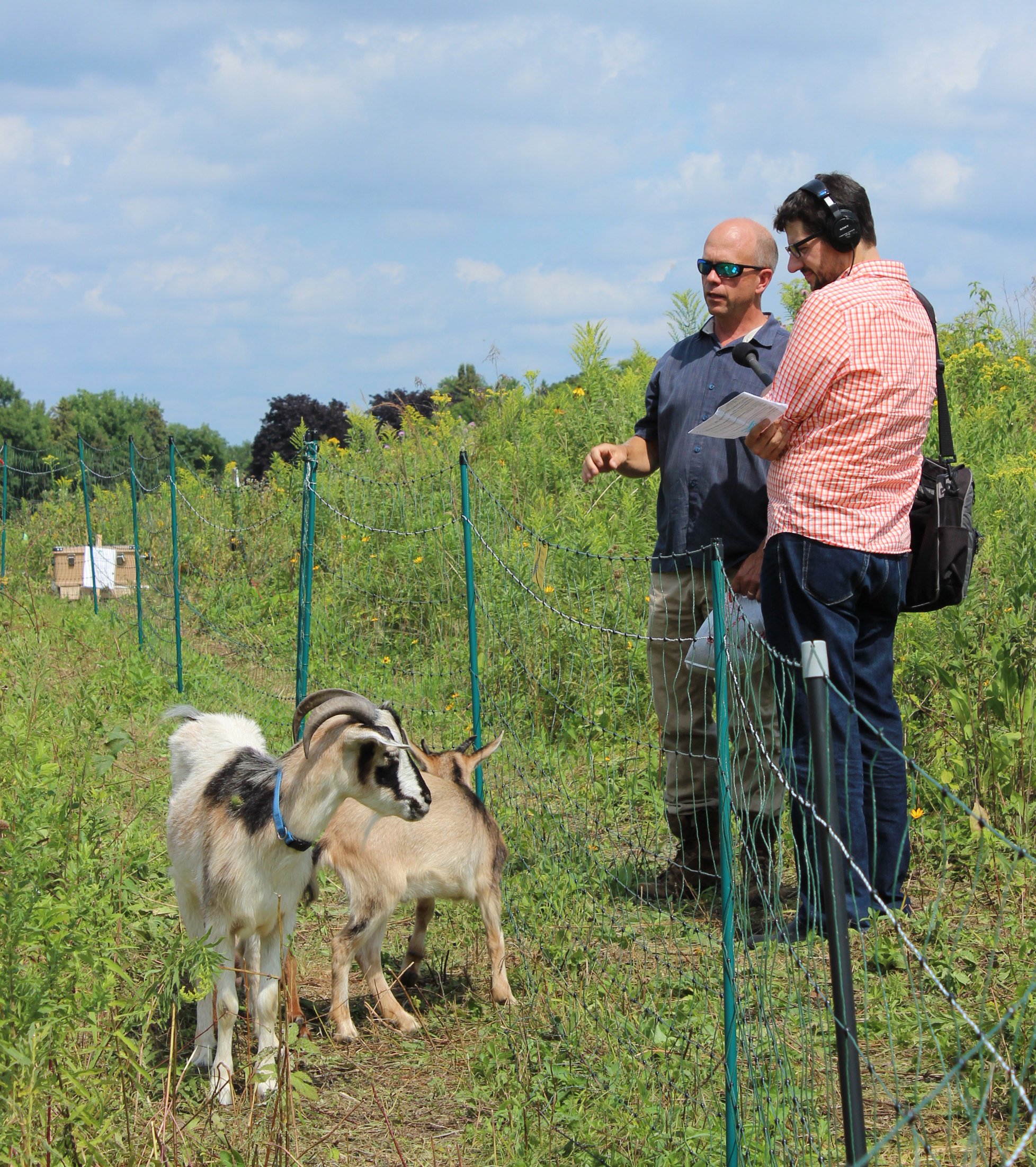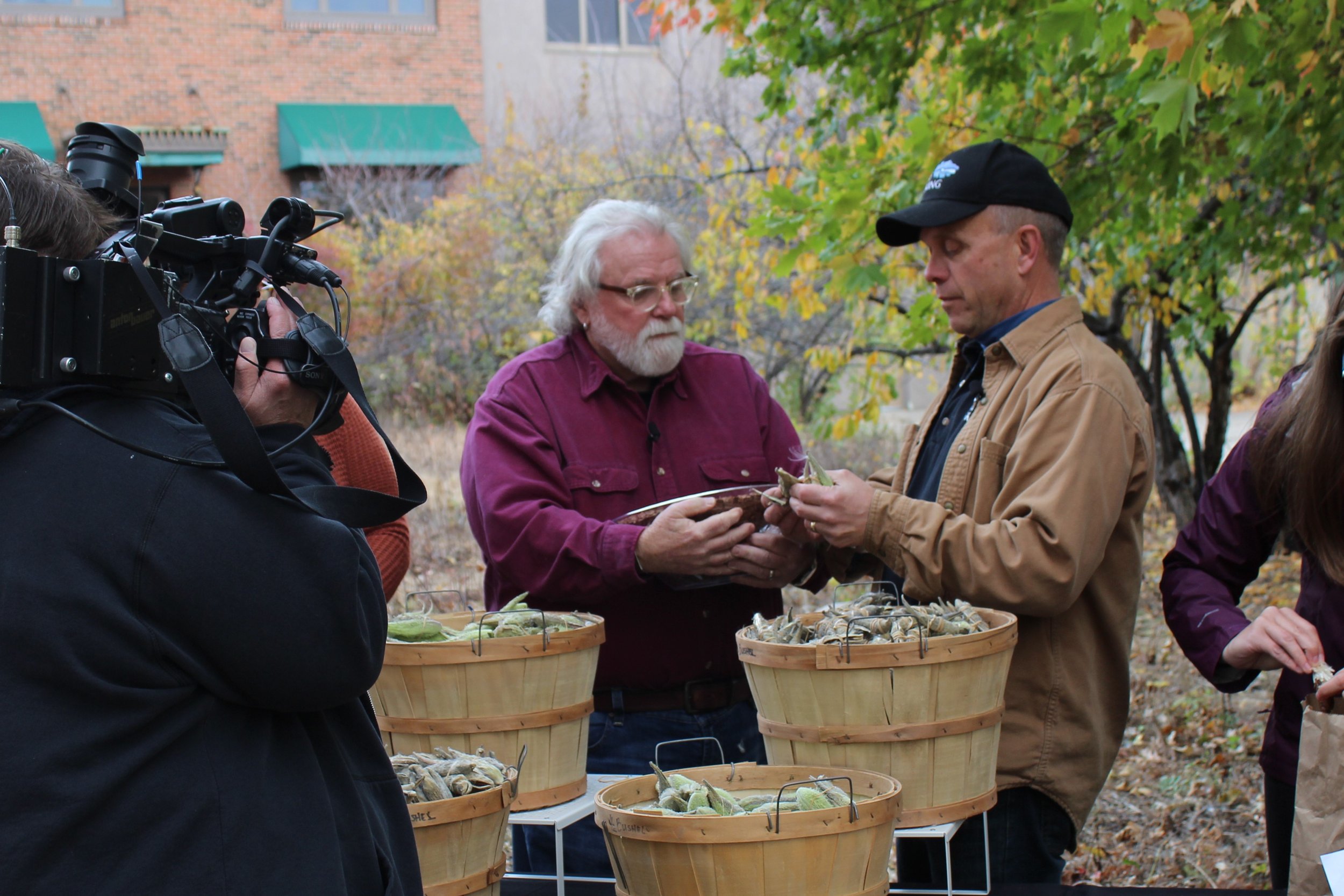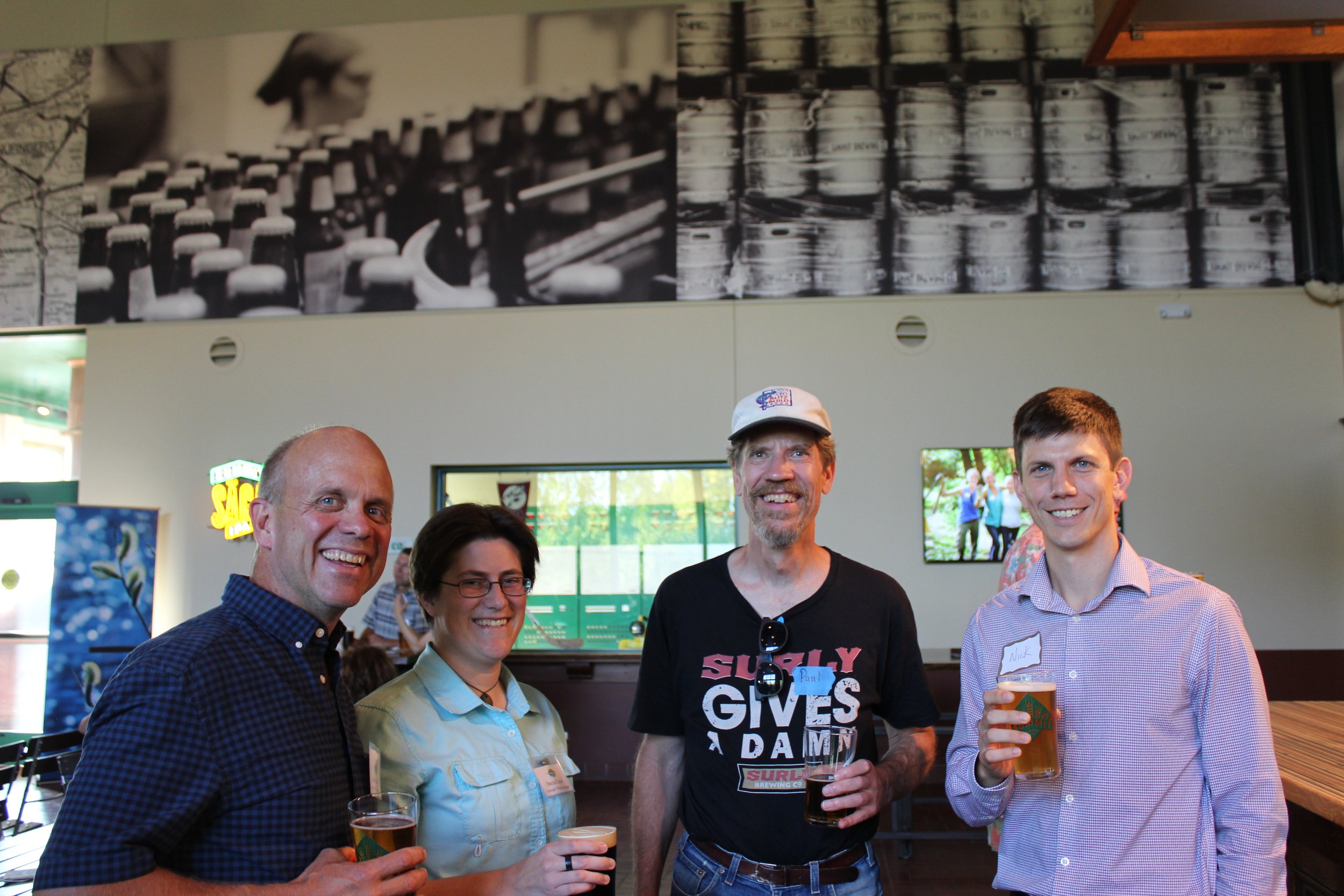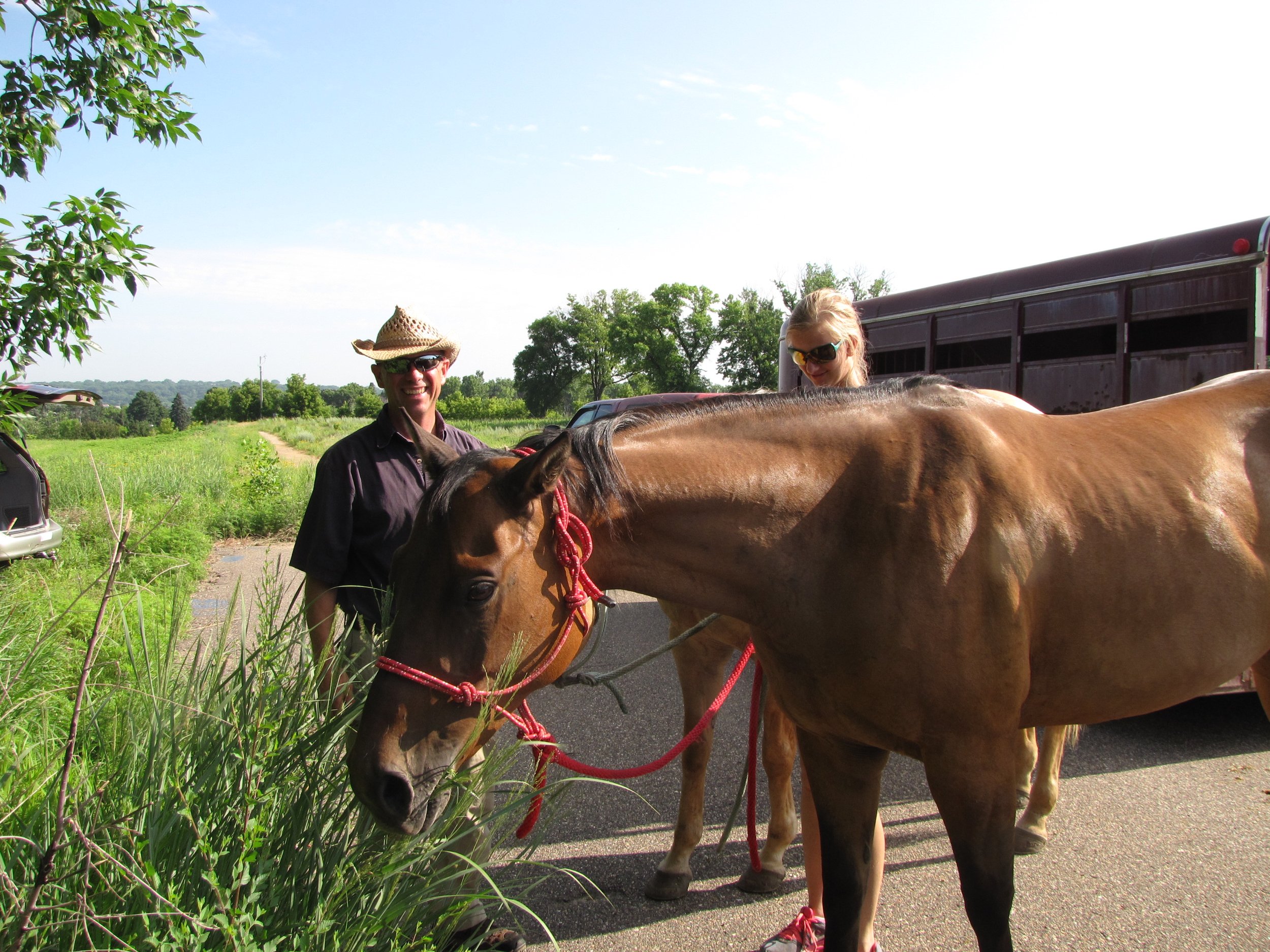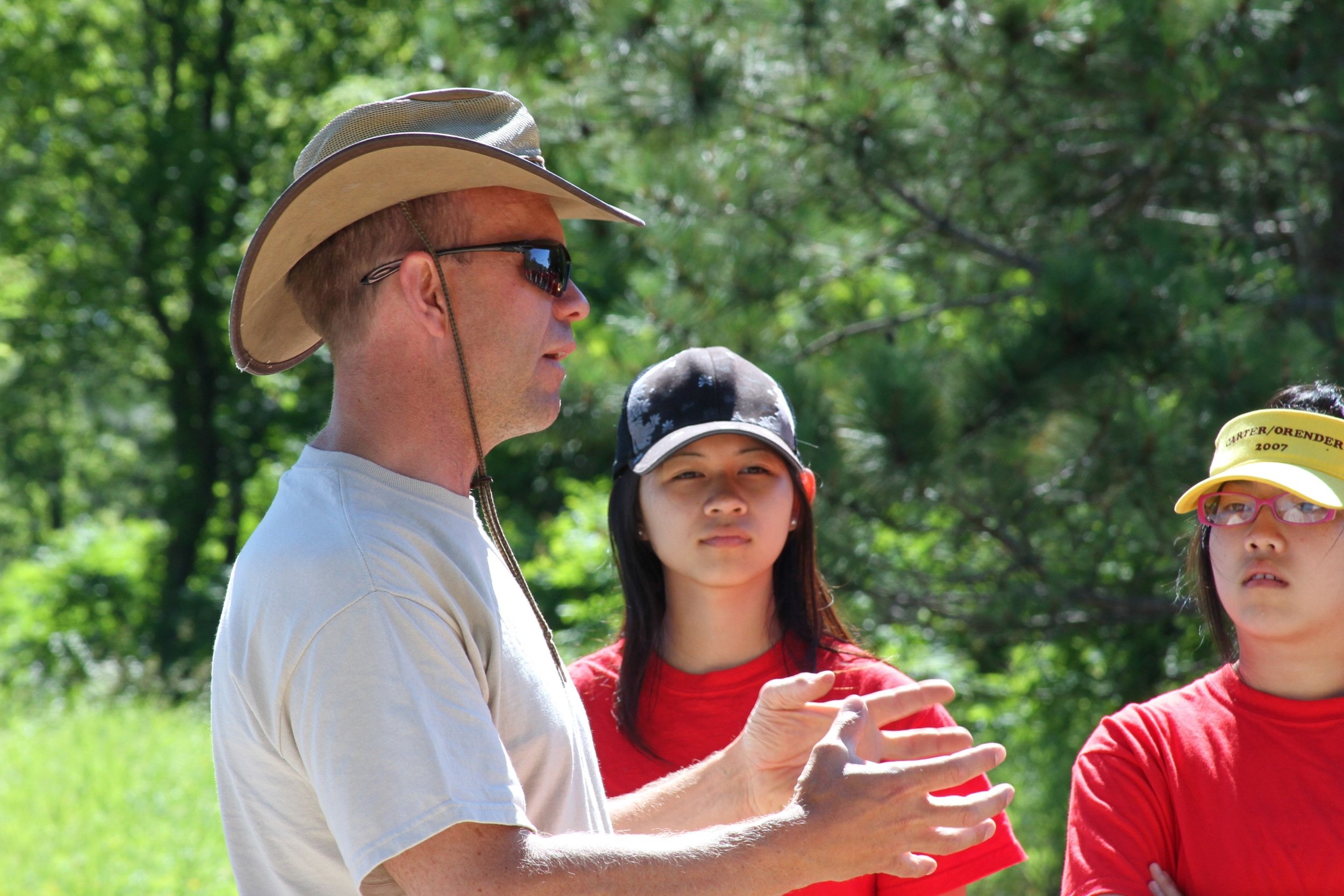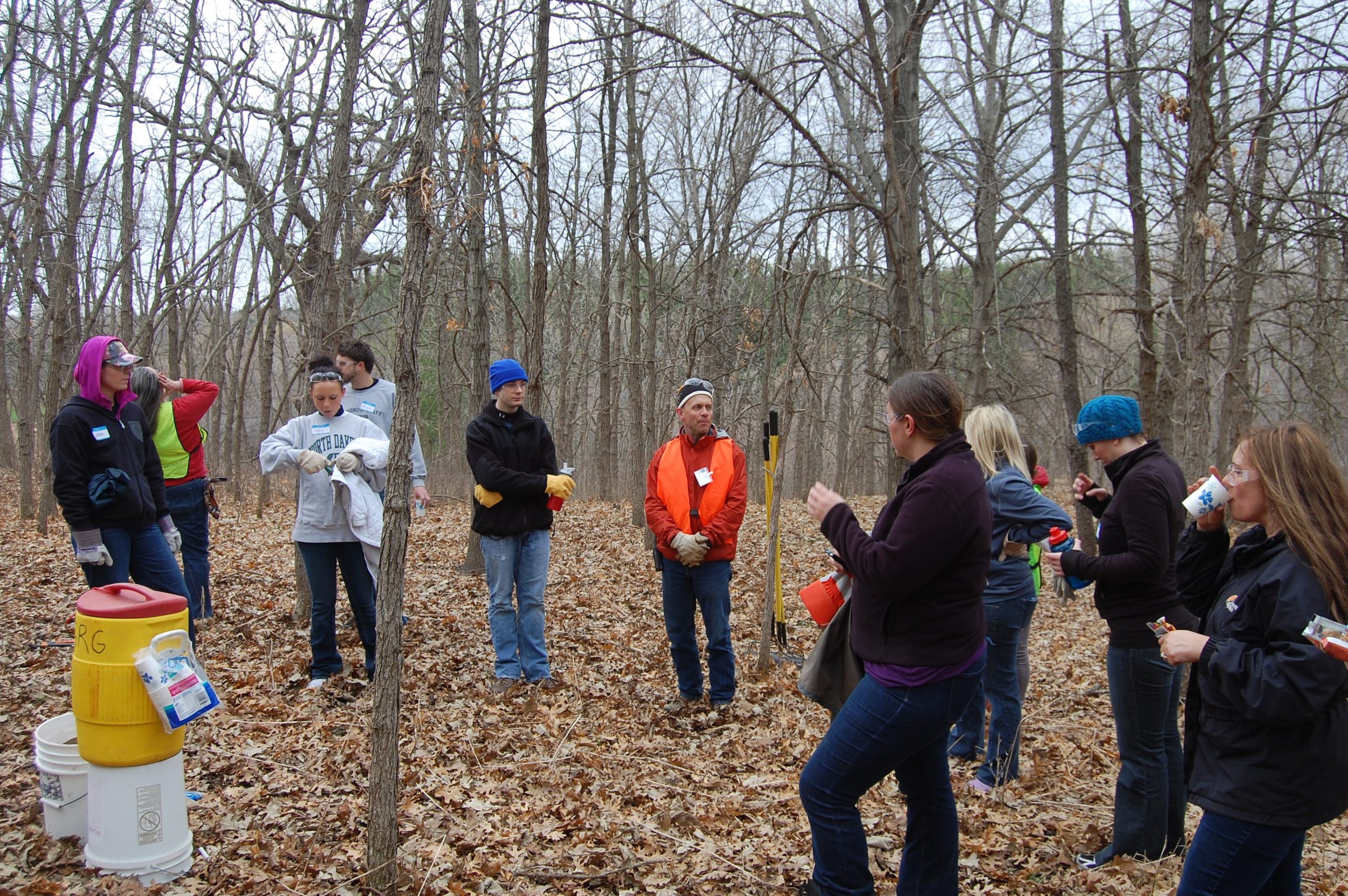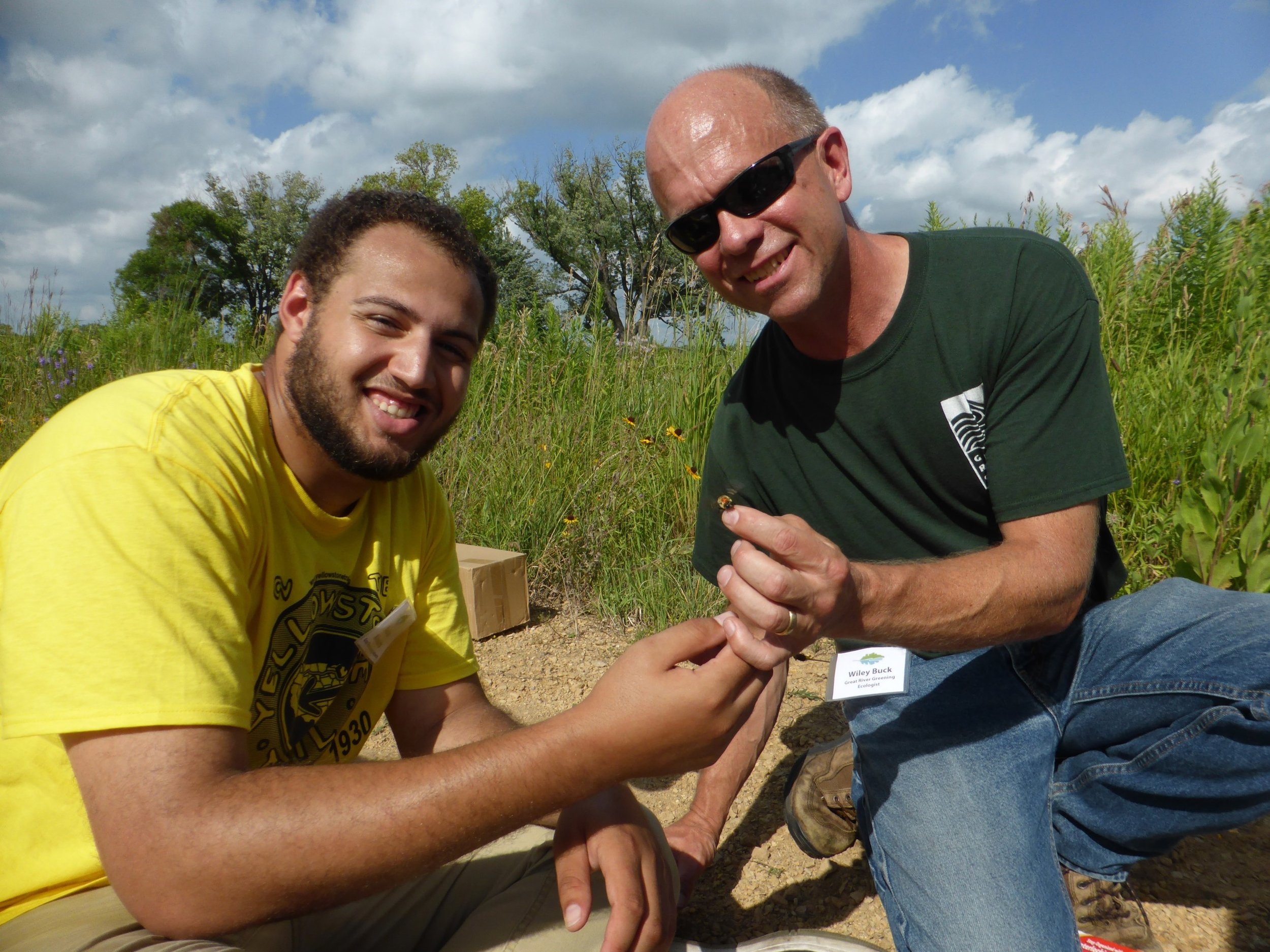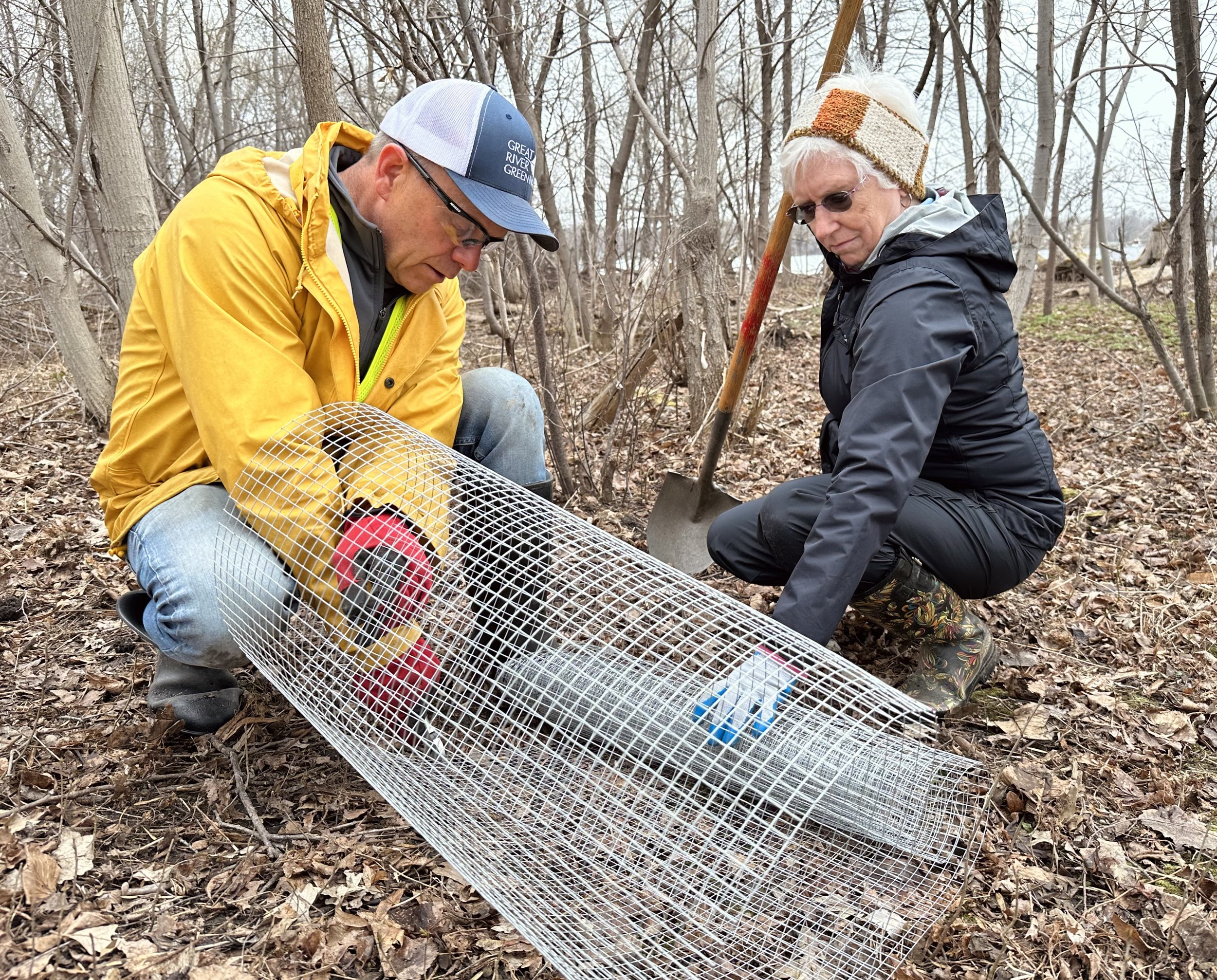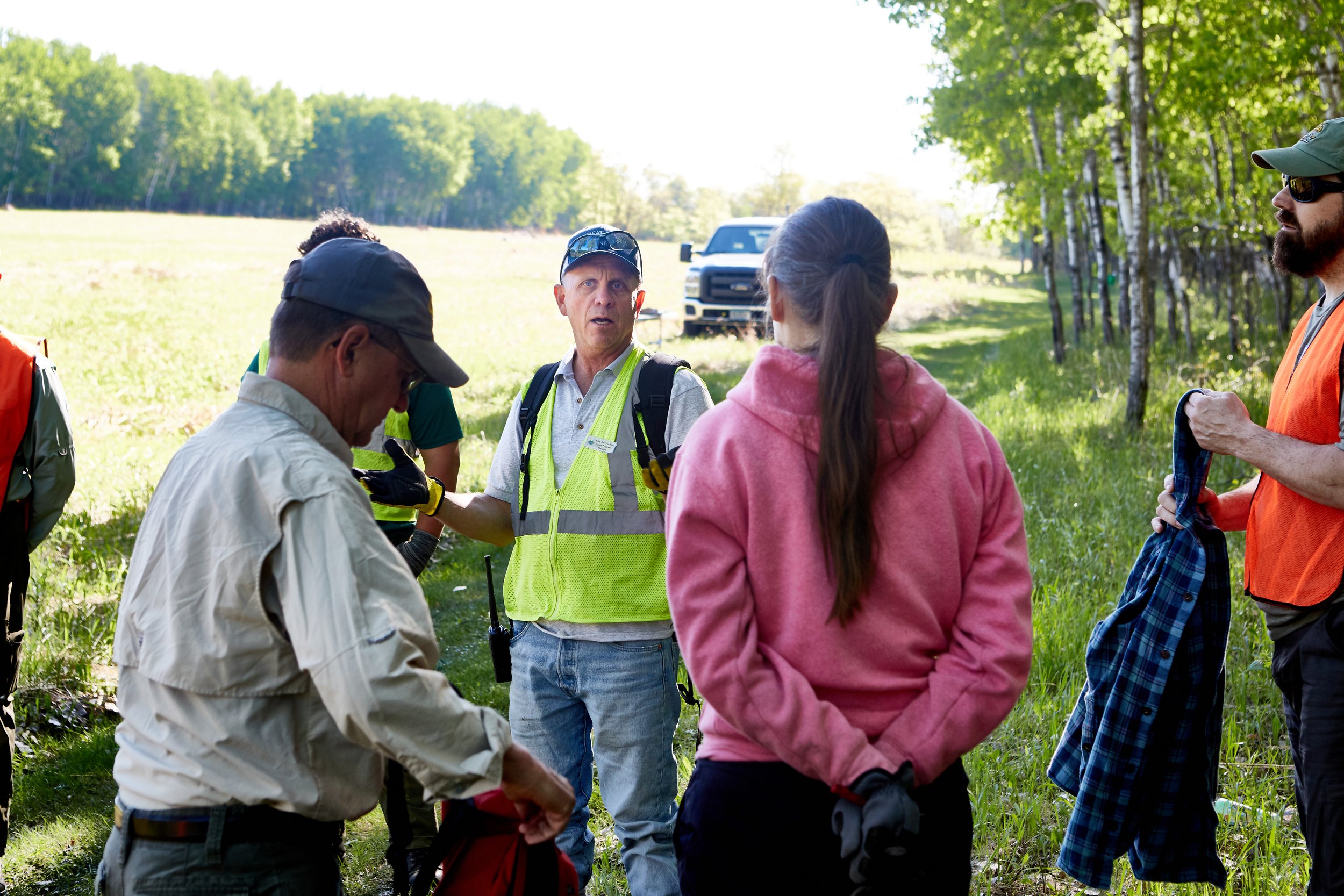Congratulations on 20 Years, Wiley Buck!
03/25/2024 – Minnesota.
Here at Great River Greening, we build strong, community-based partnerships, from our staff and Board of Directors to volunteer groups, donors, municipalities, vendors, schools, and the State of Minnesota. Minnesota’s land and water are shared natural systems, and we rely on the support of individuals and groups to protect them.
Today we’re shining the spotlight on Wiley Buck—Senior Program Manager for Central Minnesota—who recently celebrated his 20-year work anniversary with Greening.
Looking Back over the Years
Not many people can keep track of their work anniversaries by the age of their children, but Wiley Buck can; he started at Great River Greening 20 years ago as the new father of twins.
“It’s a great place to work while raising children,” Wiley says of Greening. “My children were zero when I started.”
Prior to working with Greening, Wiley was with the Minnesota Department of Natural Resources and had even volunteered with Greening’s original project, “Greening the Great River Park,” in Saint Paul along the Mississippi riverfront and Shepard Road.
Needless to say, Wiley has seen a lot of changes both within the organization and in the environmental field as a whole over his tenure here. As Greening has grown, so has the size of our projects and grant funding.
“It’s kind of mind-boggling,” Wiley noted when comparing grants from early-on to recent years. He remembers the excitement of being awarded funding to take a local community college class out to Grey Cloud Dunes exclaiming, “$9,000! We got $9,000!” While any level of support certainly makes an impact on our work, our grants today can vary anywhere from $5,000 to $150K to even a recent record-breaking $10 million.
Although much has changed over the years, Wiley pointed out this constant.
“Over the 20 years [I’ve been here], Greening has these really exciting projects. You know, they're just wonderful projects and have always been that way. And that's the one common thread—super interesting projects.” Wiley continued on, “the volunteer events still give me a buzz after 20 years. It's just so fun to be with 20, 30, 40, 50, or even 100 like-minded people doing something together."
It’s impossible to narrow down 20 years of projects, volunteer events, and field stories—trust us, Wiley has great stories—so here are three that particularly stand out:
Oheyawahe-Pilot Knob in Mendota Heights
Known to the Dakota people as Oheyawahe, or “the hill much visited,” Pilot Knob is a place of gathering and peace—a beautiful natural space with rolling prairie and oak savanna overlooking Bdóte (the confluence of the Minnesota and Mississippi Rivers) and the downtown skylines. Starting in 2006, Wiley had the privilege to work on the Oheyawahe-Pilot Knob restoration for about ten years (Greening still actively works on this project, but Wiley’s portfolio is now geographically focused on Central Minnesota).
In working there on a regular basis, Wiley saw first-hand how Oheyawahe-Pilot Knob remains a gathering place for many. From individuals spending time in nature to Indigenous communities holding ceremonies to school groups on field trips, Wiley really enjoyed getting to know the folks he got to interact with at Oheyawahe-Pilot Knob, saying, “it was nice to see that it was still a living history.”
“It was always an honor to work there and be a part of that. It’s such a sacred and historic site,” said Wiley. He noted that the realization of this would often occur to him almost randomly. He could be standing amongst the sweet clover doing invasive plant surveys, and the thought would pop up that, “people really trust me with this prairie.” He clarified, of course, that this long-term restoration was the ongoing product of the combined efforts of many stakeholders.
Together with our partners and volunteers, Greening’s restoration efforts at Oheyawahe-Pilot Knob over the years have included: hand-planting and hand-seeding of native plant species, buckthorn and other invasive plant species removal, prescribed burns, and conservation grazing using horses, sheep, and goats.
A Tale of Two Goats
Speaking of goats… Oheyawahe-Pilot Knob was one of Greening’s first projects to use goat grazing as a restoration technique. Wiley was even interviewed by Minnesota Public Radio on the subject in 2014! But we got the inside, exclusive scoop regarding two memorable goats:
Several goats were on temporary loan from Dodge Nature Center to munch on non-native invasive species (like burdock and buckthorn) or overabundant native plant species (such as Canada goldenrod). One such goat was a ram with huge horns, Wiley remembers, “going out like two or two and a half feet or something.” During this time, the goats were kept in an area secured by an electrified fence, and it was quickly discovered that horns do not conduct electricity.
“This ram didn’t even try, but he got his horns tangled in the fence, knocked it down, and just walked right out,” said Buck. “That’s the same one that then started eating [plants at] the grounds of Acacia Cemetery… It was our first clue that people like goats. The woman who called in to report it said, ‘There’s a goat at Acacia Cemetery. Does it have water?’ That was a learning experience.”
Thankful that people have a soft spot for goats, the ram was retrieved and safely returned to Dodge Nature Center.In addition to the goats from the nature center, several were also brought in from Pechacek Farms in Denmark Township. Wiley remembers that the farmer had a particular warning for him.
“Yeah, you’ve got to watch out for that one ewe. She’s a rascal and she’s really smart,” Wiley recalls the farmer saying. Wiley continued, “You know, four hours later, we got a report that she had jumped the fence.” After safely retrieving the goat, Wiley requested that the farmer take back this goat to avoid future possible escapes. Wiley recalls him saying, “Nah, she’s fine. She just had to do that to show everybody that she could.”
It turns out, the farmer knew his herd well. The goats were out there an additional two weeks without incident. “She just had to show off,” Wiley said.
The Snow Event
This last story is truly a Minnesotan experience. Wiley remembers gearing up for a private volunteer event in late-April 2013. Greening was scheduled to have 100 volunteers from Surly Brewing plant 1,000 trees out at Cedar Creek Conservation Area in Anoka County.
True to form, Minnesota’s weather was unpredictable, and we got approximately 10 inches of wet snow in the two days leading up to the event.
“It gave me fits. ‘Is it a go? Is it a no go?’” Wiley recalls fretting over the logistics that went into planning such a large event with complicated conditions. Thankfully, the ground wasn’t frozen, so volunteers simply had to peel back the snow in each spot to plant the trees.
Despite the snow, a few trucks getting stuck in mud, and even some sunburn, the trees were planted and volunteers had a fun time. “Surly was fun,” Wiley commented. “Our contact said, ‘Yeah, we’re in it… As we like to say, this is just getting surlier and surlier.”
Looking Ahead
After reflecting on the last 20 years, what is Wiley’s outlook on the future?
“It’s really nice to see Greening growing like it is,” said Wiley. “The organization still supports problem-solving and innovation, advancing our field and constantly looking at ways to do things better.”
Wiley’s got several programs and projects that he’s continuously looking forward to. “Our biochar program is really ramping up very quickly. That’s exciting,” he notes. “There’s still a lot of opportunity in every partnership that we're in already: Anoka Sand Plain, Camp Ripley Sentinel Landscape, and Sauk River.”
Wiley Buck, from all of us at Great River Greening, thank you for your 20 years of dedication, expertise, and—of course—laughter. We enjoyed celebrating with you and we’re proud to have you with us!
Gallery Photos: Courtesy of Great River Greening unless specified otherwise.
Blog Photos (Courtesy of Great River Greening):
Wiley Buck addresses a large group of volunteers at Katherine Abbott Park during a Buckthorn Blast in 2014;
Emeritus Board Member Tom Tessman (left) and Wiley Buck (right) are all smiles during this 2017 volunteer event at Bushaway Road in Wayzata;
Before & After set of Oheyawahi-Pilot Knob in Mendota Heights showing an area of turfgrass that was restored into native prairie;
Two goats arrive to assist with grazing at Oheyawahe-Pilot Knob in 2014;
Hearty volunteers from Surly Brewing plant trees despite the previous day's snowfall (2013).






